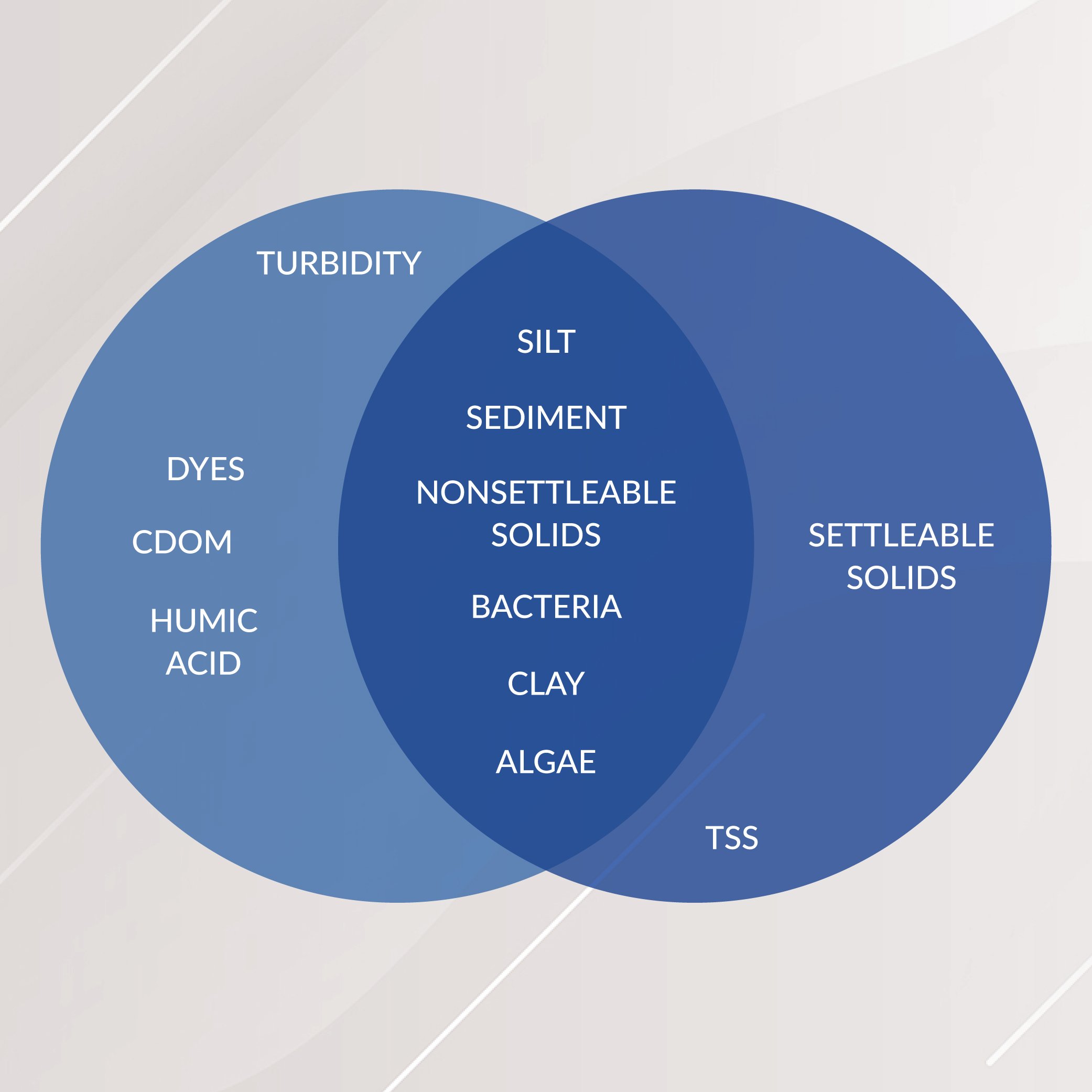Part 1: Introduction to TSS (Total Suspended Solids)

Suspended solids and other solid substances in wastewater
All freshwater sources contain solid matter, which can either be in the form of suspended solids or dissolved solids. The total of both of these forms is referred to as total solids (TS), which is the total amount of dried residual matter remaining after the water is evaporated without first having been filtered. When water is filtered, the dried residual matter trapped by the filter membrane is referred to as total suspended solids (TTS), while the particulate matter derived from the evaporated filtrate is referred to as total dissolved solids (TDS).
What is TSS?
Suspended solids typically include organic and inorganic particulates that are suspended in water. The concentration of suspended solids has a direct impact on water turbidity. The more suspended solids there are, the more turbid the water is, which limits sunlight and therefore photosynthesis. Suspended solids can therefore have a direct impact on productivity in freshwater systems, and can result in low oxygen levels leading to mass die offs of aquatic life.
Wastewater, particularly wastewater discharges from industrial sources, is one of the biggest contributors of suspended solids to freshwater systems, often reaching concentrations of up to 30,000 milligrams per liter. Total suspended solids therefore provide an important measure of wastewater quality and serve as an indicator of the level of pollution in freshwater systems.
What is the difference between TSS and Turbidity?
While TSS and turbidity are both measures of a water body's transparency, there are subtle differences in how they are measured. Turbidity measures how much light is penetrating through a water body, and measurements are typically conducted on site using a portable turbidity measuring device, which gives the results immediately. TSS, on the other hand, tells us how much fine suspended solids are present in the water, and measurements are conducted in a laboratory using laboratory techniques such as filtration and drying.
How to measure TSS
Gravimetric analysis is one of the most widely used methods for measuring TSS in water. This is a quantitative method, based on EPA Method 160.2, that measures the weight of the residues retained on a cellulose ester or glass-fiber membrane filter after the water sample has undergone filtration. This method, which has a practical range of between 4 - 20,000 mg/L, can be used to measure TSS in surface-, saline- and drinking water, as well as in domestic and industrial wastewater effluent.
Source
https://www.rocker.com.tw/en/application/suspended_solid_test
- Most Viewed Blog Articles (5)
- Company News (284)
- Emerging Technologies (64)
- Microbiology and Life Science News (93)
- Water and Fluid Separation News (97)
- Filtration Resources (93)
- Product News (19)

![Join Sterlitech at BIO 2024 [Booth #5558]: Exploring the Future of Biotechnology](https://www.sterlitech.com/media/blog/cache/300x200/magefan_blog/b4.jpeg)




